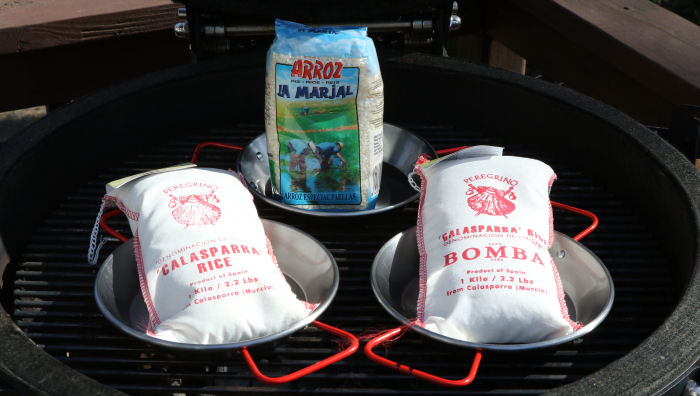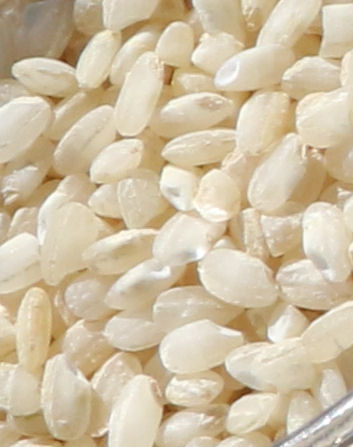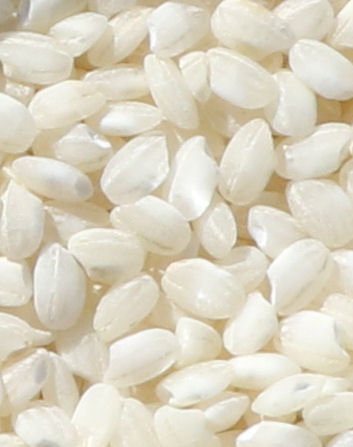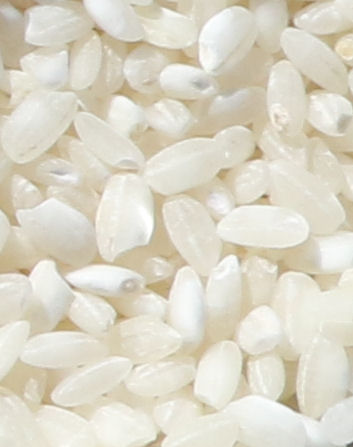 |
 |

As a part of creating our Paella Primer, we learned that first and foremost, paella is a rice dish. The rice is all important so if you are going to the trouble of making real paella, you should make the effort to use real paella rice. The problem you run into with substitutes is that the other short-grained strains of rice are designed with other applications in mind: Arborio is meant to become creamy when cooked; Asian rice is meant to be sticky; Basmati is light, aromatic and fragile; and long grain rice (such as Uncle Ben's) is a completely different product with lower absorbency. So we bought several types of paella rice, always intending to eventually do a comparison to help readers make a choice as to which type of rice they may wish to use. We noticed that many purveyors of paella supplies seemed to have three grades of rice, the most expensive rice being about three times the price of the cheapest rice. We have consistently used these three rices, so is the most expensive rice worth it? Here is what we found out.
The Three Rices
We have bought most of our paella supplies from La Tienda mainly because they are located closest to us and have consistently provided good products and good service. The three rices that they carry are Bomba, Calasparra and La Marjal. You can purchase these rices yourself, either from their website or from Amazon:
Bomba Rice
Bomba Rice
Calaspara Rice
La Marjal Rice
 |
The best rice for paella is bomba, a Spanish short-grain rice that is able to absorb three times its volume in liquid. When cooked, the grains remain separate and do not stick together. (The rice in paella should be dry and separate when done, not creamy like risotto.) According to the La Mesa Foods website:
"Grown in the rich soils of the national protected L’Albufera Park of Valencia, Spain, Bomba rice is the crème de la crème, the pinnacle of paella making. Hard to find even in Spain due to the difficulty in growing it and a far lower yield at harvest time, it will improve any of your Spanish rice dishes. Although it's been around for centuries, Bomba rice is almost unknown outside of Spain. But Bomba is definitely better - you really can taste the difference. Why? Because Bomba can soak up very large quantities of liquid while remaining very firm-grained during cooking. This means that Bomba rice will be much more flavorful when it is finished cooking than standard Spanish fare would be. It's also a high-integrity grain and even after it has absorbed all that liquid, Bomba is still firmer and more distinct than any other rice variety out there."
Another benefit of Bomba rice is that it is also the easiest rice for a beginner to use. Other varieties of short grain rice can require a bit of extra care to produce the best results. With Bomba rice, it is more difficult to overcook the rice and thus easier to produce good results. Bomba rice is expensive compared to other rice varieties due to the care required in cultivation and the length of time required for it to mature. At the time this was written, Bomba rice cost about $15 per kilo. It is an heirloom rice which is currently being revived. The quote above aside, it is readily available these days from many suppliers in the United States.
Calasparra Rice
 |
Like Bomba rice, Calasparra rice is a unique, centuries-old short grain rice with a leisurely maturing process, 30% slower than other kinds of rice. This longer growing cycle produces kernels that are exceptionally dehydrated - ready to absorb even more of the tasty sauces and flavors of paella broth and other Mediterranean recipes. The Calasparra rice that we bought and included in this comparison indicates that for making paella, you can use 3 parts liquid to 1 part rice.
Since Calasparra rice is not a specific strain like Bomba, its price is somewhat lower. Again, as this is written, Calasparra rice costs about $9 a kilo.
La Marjal Rice
 |
The packaging for this particular brand of rice doesn't include any sort of cooking instructions or any sort of suggestion for the ratio of liquid to rice, so we will just have to see for ourselves how much liquid (and therefore, flavor) this less expensive option will absorb.
The Comparison Methodology
We of course conducted this comparison using a kamado style charcoal cooker. In this case, we used a Kamado Joe BigJoe cooker. We used three identical 20 cm (7¾ inches) paelleras to cook the three rices simultaneously. Each pan started off with some olive oil and three tablespoons of prepared sofrito sauce. We heated the sofrito to thicken it some, then added ½ cup of rice to each pan. The rice was allowed to cook in the sofrito briefly, then 1 cup of warmed chicken broth infused with saffron was added to each pan. From that point on, we allowed the rice to cook and absorb the liquid. We checked the rice for doneness when the liquid was absorbed. If the rice was done, we allowed it to cook a while longer to develop the soccorat before removing from the fire. If the rice was not done, we added more liquid and repeated.
Here are some photos of the process:
The Results
The first thing we wanted to compare was the volume of liquid absorbed by each rice until the rice was done cooking. We found the following interesting table of absorption capacity and cooking time at the Tapas Bonitas website:
| Rice Variety | Liquid to Rice Ratio | Cooking Time |
|---|---|---|
| Arroz Bomba de Calasparra | 4.5 - 5.0 | 18 min |
| Arroz Calasparra | 3.0 - 3.5 | 20 min |
| Arroz Balillax x Sollana | 3.0 - 3.5 | 20 min |
| Arroz Sollana | 3.0 - 3.5 | 20 min |
| Arroz Bomba de Valencia | 3.0 - 3.5 | 16 min |
| Arroz de Valencia | 2.2 - 3.0 | 16 min |
| Arroz Bahia | 2.2 - 3.0 | 16 min |
| Arroz Senia | 2.2 - 3.0 | 16 min |
| Arroz Fonsa | 2.5 - 3.0 | 18 min |
| Arroz Gleva | 2.5 - 3.0 | 18 min |
Our results fell right into line with their data. The La Marjal rice is probably closest to the Arroz de Valencia rice in the Tapas Bonitas table:
| Rice | Liquid | Ratio | |
|---|---|---|---|
| La Marjal | 0.5 cups | 1.5 cups | 3.0 |
| Calasparra | 0.5 cups | 1.75 cups | 3.5 |
| Bomba | 0.5 cups | 2.25 cups | 4.5 |
Of course, taste and texture are more subjective measurements, so to aid us in this comparison, we enlisted the help of the wife (yes, the wife who.....). We knew which rice was which, but she did not. In the end, however, we both came to the same conclusion, which is probably what you have been waiting for all along.
For texture, we ranked the rices, best to worst, as Bomba, La Marjal, and Calasparra.
For intensity of flavor we also ranked them Bomba, La Marjal, and Calasparra.
In addition to the intensity of the flavor and the texture, you could see that the Bomba rice, soaking up the most liquid, produced the greatest volume of cooked rice. Calasparra was second in volume and the La Marjal was third.
So, what's the bottom line? We would recommend that if you want the very best paella you can make, go with the most expensive Bomba rice. You'll get more flavor, a greater volume of cooked rice, and a great texture. If you want to save some money but still produce a great paella, go with the La Marjal. The flavor will be less intense and you'll get a lower volume of cooked rice, but the texture will still be right up there with the best. Only you can decide if the Bomba rice is worth 3 times the price of the La Marjal, but now you know what to expect.
You can support this website by shopping at The Naked Whiz Website Store and Amazon.com
|